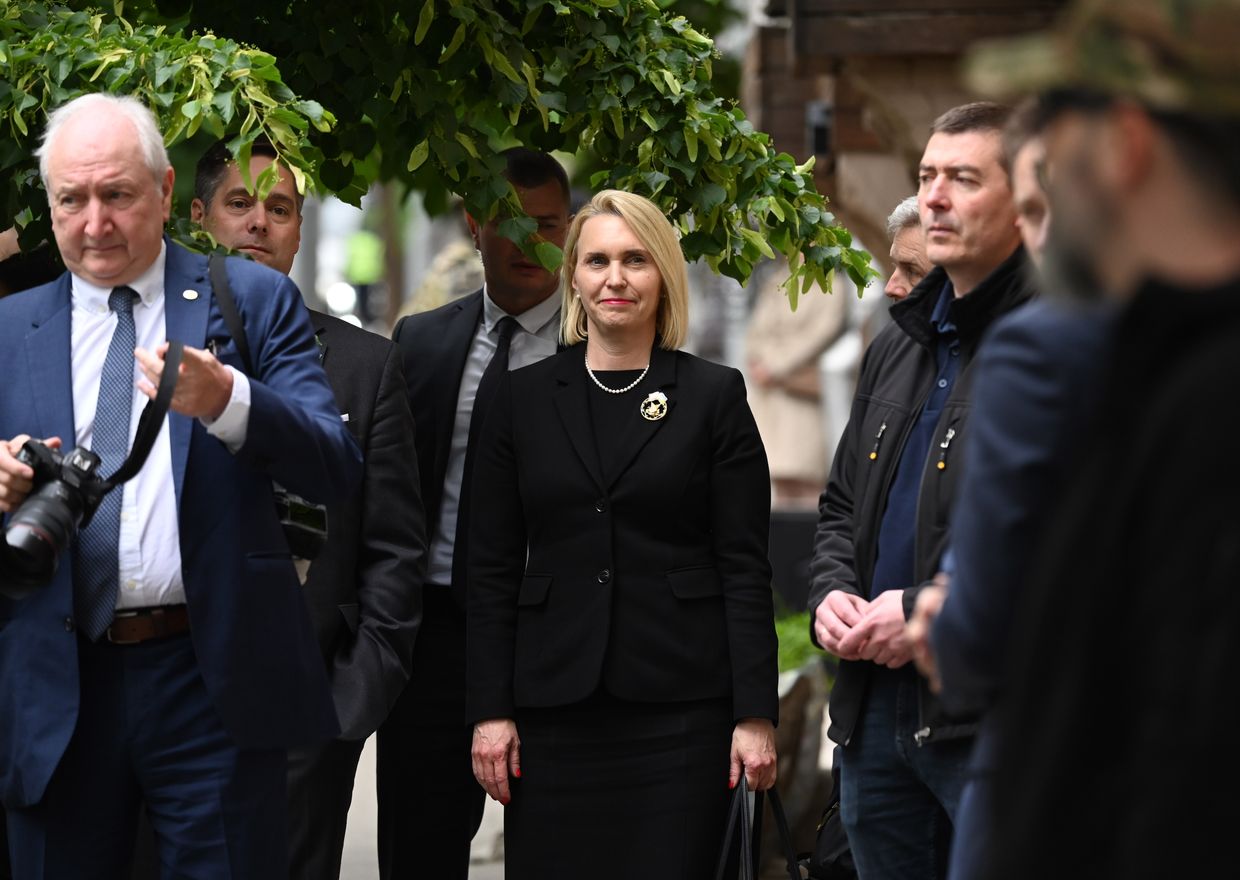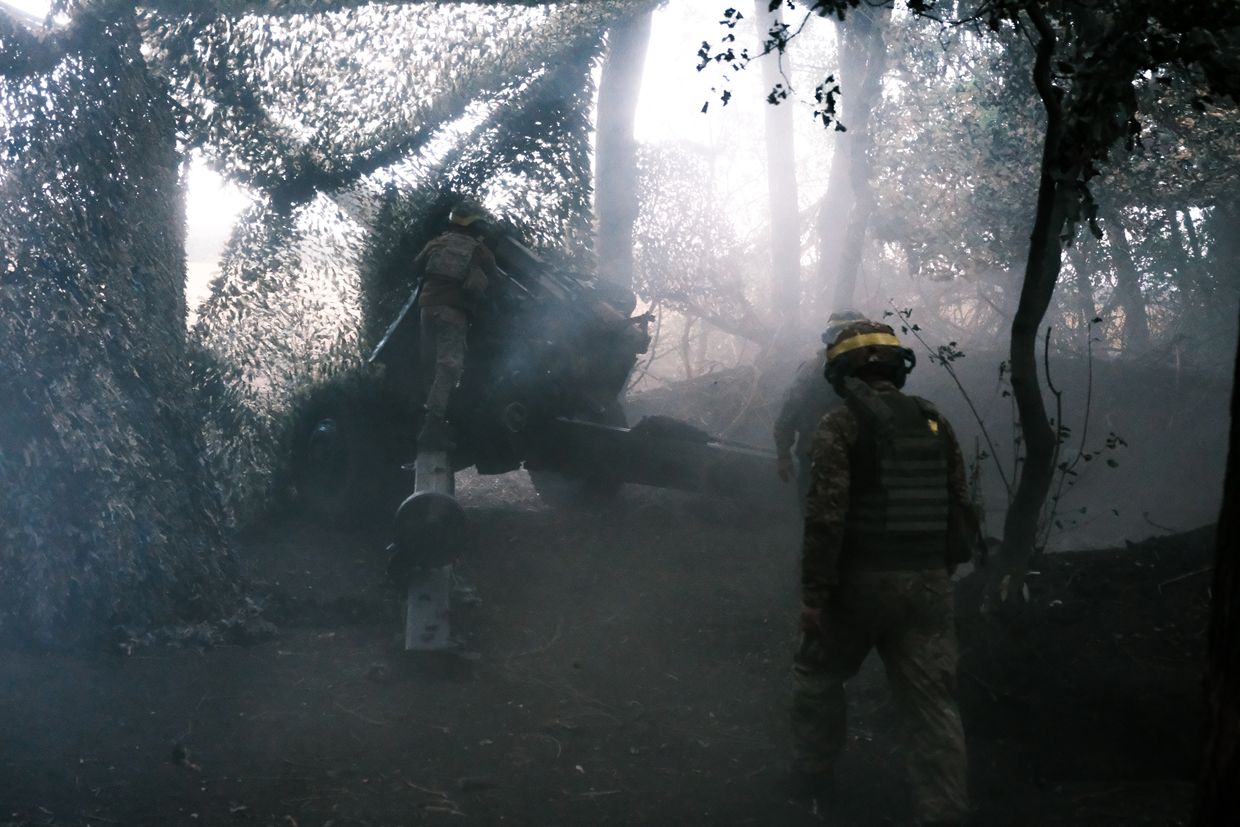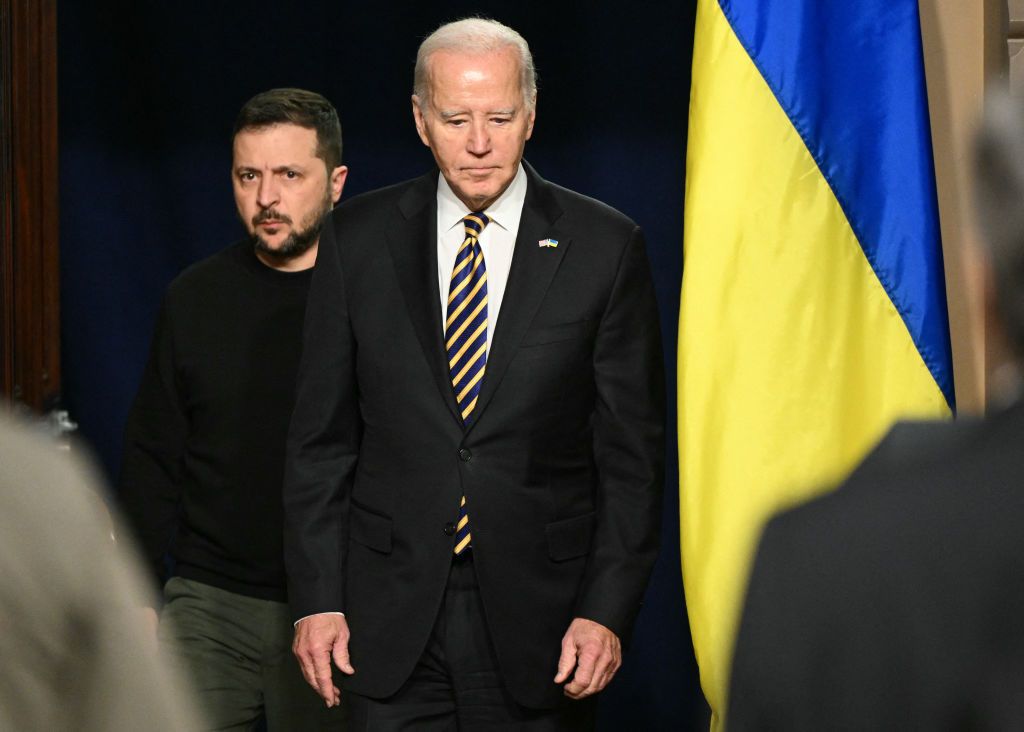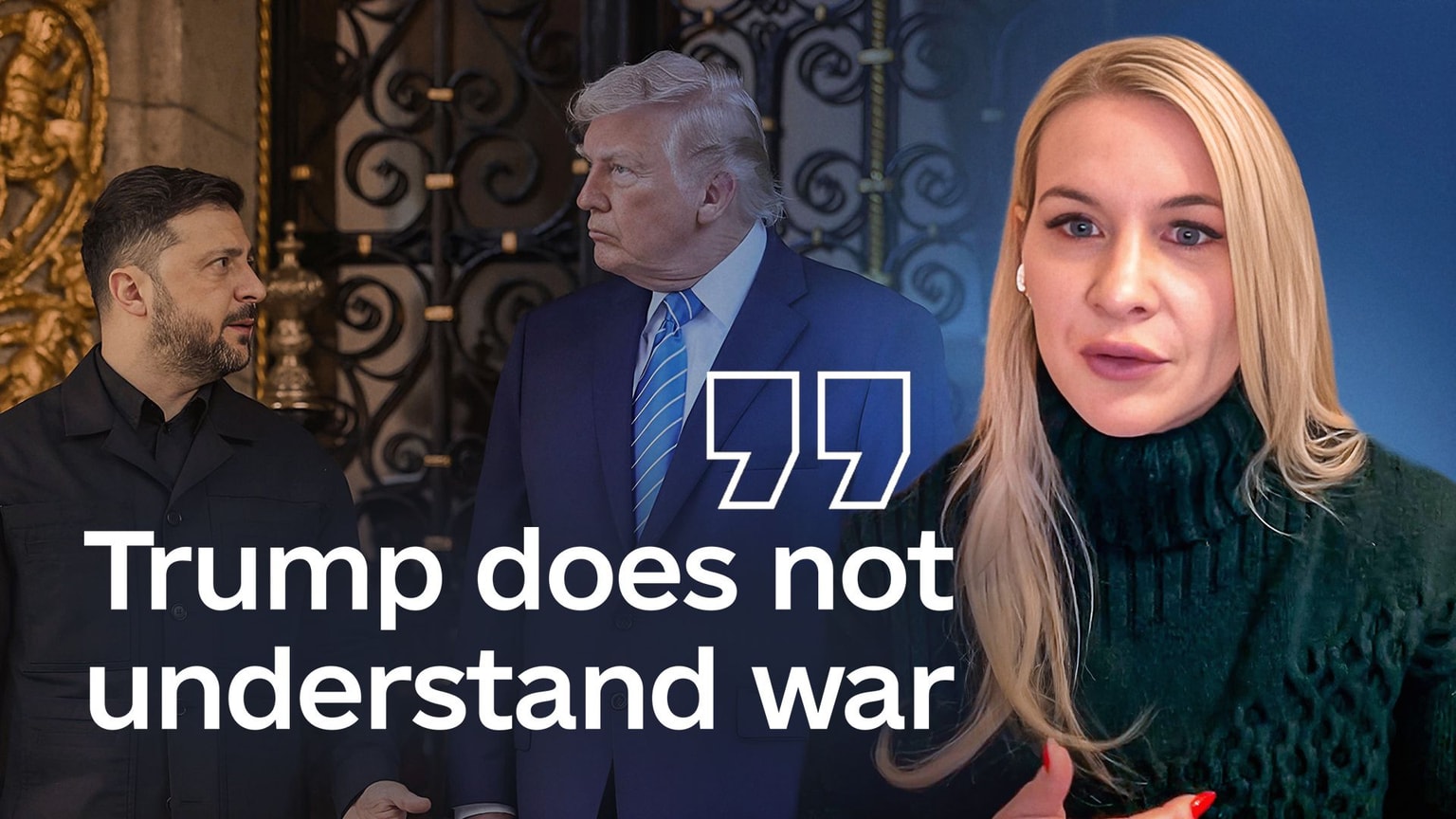
‘Russia must feel it’s going to lose’ – Zelensky’s ‘victory plan,’ explained
As President Volodymyr Zelensky prepares to present his "victory plan" to U.S. President Joe Biden and presidential candidates next week, experts and officials say the plan might force Russia to agree to a just peace for Ukraine.
President of Ukraine Volodymyr Zelensky and U.S. President Joe Biden walk to the Oval Office of the White House on Sept. 21, 2023 in Washington, DC. (Photo by Drew Angerer/Getty Images)
More than 2.5 years into Russia’s full-scale invasion, as Moscow continued to make rapid advances in the east and launch relentless missile attacks across Ukraine, Kyiv seemed to be facing a stark choice: make territorial concessions for an unjust peace or prepare for a prolonged war, sacrificing more lives with no guarantee of success.
Then, President Volodymyr Zelensky made an unexpected announcement – he has a plan on how to end Russia’s war with Ukraine’s victory.
The so-called "victory plan" was designed to strengthen Ukraine’s future negotiating position and push Russia to make a just peace.
Kyiv remains secretive about the plan's details as Zelensky prepares to present it to U.S. President Joe Biden and American presidential candidates during his visit to the U.S. next week. The plan is expected to address military, political, diplomatic, and economic strategies.
A source close to Zelensky told the Kyiv Independent that the "victory plan" aims "to create such conditions and such an atmosphere that Russia will no longer be able to ignore the peace formula and the peace summit."
As Moscow has maintained initiative on the battlefield in the east of Ukraine for most of the year, it has repeatedly rejected Zelensky's 10-point peace formula, which calls for a complete Russian troop withdrawal from Ukrainian territory, among other steps.
"The problem is, to get to that point where we have any sort of peace negotiations, Russia must feel like they're going to lose, and we are not there yet," Rep. Jimmy Panetta, a Democrat on the House Armed Services Committee in Congress, told the Kyiv Independent.
"I hope part of this victory plan is how we can shape battlefield conditions to reach that point," said Panetta, who met Zelensky and other Ukrainian officials in Kyiv last weekend.
Zelensky announced his team was preparing the "victory plan" as Ukraine gained momentum following its incursion into Russia’s Kursk Oblast, which has widely been considered a successful operation that exposed Russia’s inability to defend its own territory and challenged its so-called "red lines."
Kyiv appears to be rushing to secure substantial backing behind its “victory plan” from Washington ahead of the November election that might bring former President Donald Trump back to the White House and jeopardize the U.S. support for Ukraine.
According to Zelensky, for the "victory plan" to work out, allies need to make “quick decisions” between October and December this year.
What is the plan?
In a few statements he has made about the “victory plan,” Zelensky mentioned it consists of four main points, with an additional fifth point to be implemented after hostilities end. The plan focuses on strengthening Ukraine's defense and creating the conditions to end the war.
Zelensky told CNN that the plan covers issues such as security, Ukraine's geopolitical position, "very strong" defense aid, and economic assistance. In a Sept. 16 address, Zelensky said that curators had been assigned to each area, emphasizing that "nothing is impossible" in the plan.
Ukraine's Presidential Office has not responded to the Kyiv Independent's request for more details on the plan's contents. Foreign Ministry Spokesman Heorhii Tykhyi declined to elaborate but said that the plan "will strengthen Ukraine, Ukrainian warriors, and Ukrainian people."

While Kyiv remains tight-lipped about the plan's specifics, Ukrainian officials have refuted media reports that it includes a partial ceasefire. "There is not and cannot be any alternative to peace, no freezing of the war or any other manipulations that will simply move Russian aggression to another stage," Zelensky said in his evening address on Sept. 18.
"There is not and cannot be any alternative to peace, no freezing of the war or any other manipulations that will simply move Russian aggression to another stage."
Danylo Lubkivskyi, the head of the Kyiv Security Forum, suggested that the victory plan would likely include ramping up sanctions against Russia and ensuring a safe sky over Ukraine, as well as the prospects of Ukraine's NATO membership and international security guarantees
"These elements clearly need to be addressed," Lubkivskyi told the Kyiv Independent.
One of the critical elements of the victory plan is likely the U.S. and other allies' approval for Ukraine to use long-range weapons to target military sites deep inside Russia, a capability experts see as essential for Ukraine to have chances at defeating Moscow.
Striking deep inside Russia will enable Ukraine to destroy the airfields from which Russian aircraft are taking off to attack Ukrainian civilian infrastructure as well as degrade Russian air defenses, thus allowing Ukrainian drones to hit key Russian oil and gas infrastructure, according to retired U.S. Lieutenant General Ben Hodges.
Oil and gas sales are the key sources for financing Russia's war machine, with 10.7 trillion rubles ($115 billion) expected in revenue in 2024, up 21% compared to 2023.
Long-range strikes will also allow Ukraine to destroy Russia’s transportation infrastructure, military headquarters, artillery and rocket positions, airfields, and logistics, "which will degrade Russia's only advantage — mass (numbers)," Hodges told the Kyiv Independent.
"Without those capabilities, it doesn't matter how many unlucky, untrained Russian soldiers there are," he added.
Although Western countries eased restrictions on the use of certain Western-provided weapons just across the border following Russia's May offensive in Kharkiv Oblast, limits on long-range strikes deep within Russia have remained in effect.

Hodges expects that during the upcoming U.S. trip, Zelensky will also continue to press for the rapid delivery of some long-promised equipment, munitions, and additional air defense capabilities needed to protect Ukrainian civilians and energy infrastructure ahead of winter.
According to Republican Rep. Don Bacon, who also attended the meeting with Zelensky last weekend, one of the victory plan's priorities seems to be improving cooperation between Ukrainian oblasts and American states. This could mean developing "more connections on the ground with the American public to garner more U.S. support of Ukraine," according to Panetta.
Why now?
Since November 2022, when various countries began promoting their strategies on how to end Russia's war against Ukraine, Kyiv has been advocating for its 10-point peace formula, which demands a full withdrawal of Russian forces and accountability for war crimes, among other things. However, this plan struggled to gain support among the nations of the so-called Global South such as Russia-friendly India and China.
The introduction of the smaller “victory plan” doesn't mean that Ukraine was forced to abandon any points of its peace formula and come up with a more modest strategy, according to Lubkivskyi. Instead, the “victory plan” likely builds on it, specifying some of its most relevant aspects, the expert believes.
Zelensky said that the “victory plan” could pave the way to a lasting peace, achievable through the full implementation of the peace formula.
Throughout the full-scale war, there have been reports of Western pressure on Kyiv to negotiate with Russia, which many Ukrainians fear could result in territorial concessions. These calls apparently intensified in the spring and summer of 2024 as Ukraine experienced a series of setbacks on the battlefield.
However, in early August, Ukraine made a move that might have turned the tide of the war.


On Aug. 6, Kyiv launched a surprise incursion into Russia's Kursk Oblast — the first invasion of Russian territory by a foreign power since World War II — causing talk of peace negotiations to fade. In just several weeks, Ukraine seized around 100 Russian settlements and over 1,300 square kilometers (500 square miles), according to Kyiv.
Zelensky soon began speaking of his “victory plan,” saying that the Kursk operation is an integral part, though the exact role it plays remains undisclosed.
"The victory plan clearly takes advantage of the so far successful Kursk operation," William Taylor, vice president for Europe and Russia at the U.S. Institute of Peace and former U.S. ambassador to Ukraine, told the Kyiv Independent.
"The victory plan clearly takes advantage of the so far successful Kursk operation."
"There's a new momentum on the battlefield with the Ukrainians on the offensive and taking the initiative… I think the actions on the battlefield reinforce the potential of the ‘victory plan.’"
The “victory plan” also comes as the U.S. prepares for its presidential election, which could impact future aid to Ukraine. Ukraine is also reportedly planning a second global peace summit with Russia's potential participation ahead of the election in November.
However, the "victory plan" had to be prepared regardless of the U.S. elections, according to Lubkivskyi. Ukrainians and Kyiv's foreign partners have been long expecting from Kyiv a clear strategy on how Ukraine sees the victory over Russia, Lubkivskyi said, calling the plan's creation "a politically important step."
"The logic of constantly proposing new steps, offering tools (to ensure Ukraine's victory), must be followed regardless of political events in certain states," he added. "The pressure must continue. This is the main guarantee of our success. And the bar must be kept high."

Will Ukraine's plan work?
Biden will be the first in the U.S. to see the full “victory plan” next week. After that, Zelensky aims to present it to presidential candidates Donald Trump and Kamala Harris, as well as members of Congress.
Zelensky explained that the plan is designed to end the war with the backing of international partners, without relying on Russia's cooperation, though he did not specify how it would achieve this.
"The ‘victory plan’ will focus on pushing the Russians back with military support, as well as strong backing from Europeans and Americans," said Taylor. He added that once Putin realizes, through this plan and international support, that victory is unattainable, he will seek a way out.
Some U.S. officials have already seen parts of Zelensky's plan and believe it is a strategy "that can work," U.S. Ambassador to the United Nations Linda Thomas-Greenfield said during a press briefing on Sept. 17. Thomas-Greenfield added the U.S. plans to promote the plan among world leaders during the upcoming U.N. General Assembly in New York, which Zelensky will attend.
When asked if Trump, who has repeatedly claimed he could end the war "in 24 hours," is likely to support Zelensky's plan, Taylor said it's uncertain but emphasized that "we do know where the American people are."

"There are strong supporters of Ukraine in the Congress, House, and Senate, who will have an influence on former President Trump if he's reelected."
According to Panetta, the “victory plan" "serves as an answer" to the Republicans in Congress who voted against the $61 billion aid package for Ukraine in April, citing the absence of a clear strategy for Ukraine's victory.
Taylor also suggested Zelensky's U.S. visit could be pivotal in securing approval for Ukraine to use West-provided long-range weapons against targets deep inside Russia. He compared this potential shift to the U.S. secretly providing Ukraine with ATACMS missiles in March, revealed only after the first attack on Crimea.
"I think there's a very good chance that either quietly or publicly, the United States, Great Britain, France, and others will give the Ukrainians the green light to use these weapons against military targets in compliance with international law sometime over the next week or so," he said.
The Kyiv Independent’s U.S. correspondent Owen Racer, reporter Asami Terajima, and Deputy Chief Editor Oleksiy Sorokin contributed to this report.
Note from the author:
Hi there, this is Dinara Khalilova, the author of this article. We need your support to continue reporting on key developments of Russia's brutal war against Ukraine. Please consider becoming a member of the Kyiv Independent community.














